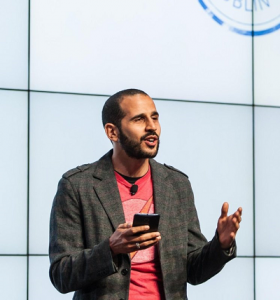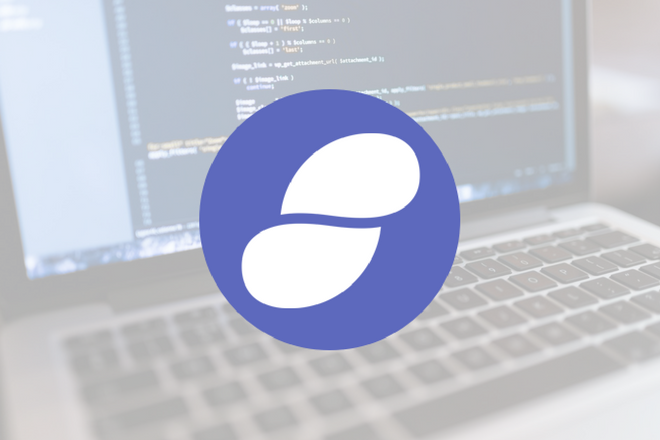Status, the project that wants to become the go-to operating system for Ethereum, conducted 2 townhalls in recent months where they elaborated on their current priorities and goals. Furthermore, in March, they posted an update on the Alpha version of their platform. In this article, we summarize the project’s development status and tasks in progress as we come to the close of Q1 2018.
The Status platform lets users browse, chat, and make payments on a single interface. It supports all Ethereum-based assets, letting users store and trade the assets locally and offering access to decentralized assets. For a more detailed look at the project, read our guide to the Status project.
The team’s priorities can be grouped roughly into five categories: core updates, marketing, open bounties, design and research. We’ll cover the highlights from each of these. The most significant update in recent months, however, has been the release of Status Alpha 0.9.15.
Status Alpha 0.9.15 Released
In a blog post dated March 20, Status announced the release of Alpha 0.9.15 on iOS and Android. This release has focused on fixing critical bugs and improving the chat facility, including UI adjustments. These improvements have been executed with the help of the community. Status actively encourages community members to participate in their bounties program, which rewards users in Status tokens for contributing to the development progress. Payments are made via smart contracts.
The chat function has received most of the attention in this release, with specific improvements related to increased options in chat, reworked inputs, optimization and spacing, design, and UI improvements.
Shortcomings that have been addressed include fixing address bugs when choosing recipients, updates to how wallets receive transactions, and optimizations in data usage and push notifications.
For an exhaustive list of improvements, read the Status blog post.
Other Development Updates and Priorities
As we mentioned, the team’s priorities at the moment can roughly be grouped into those 5 aforementioned categories. These tasks are being executed with the intention of releasing the best Beta version as quickly as possible.

Their townhall on February 5, hosted by COO Nabil Naghdy, covered the progress of the various departments in technical detail. One of the team’s high-level goals is to increase adoption through the generation of incentivized real-world use cases. They made this clear from the outset of the townhall. They also noted that there have been over 10,000 requests for early access in Q1 2018.
Objectives for Q2
Their most recent townhall, conducted on March 6, discussed in detail their objectives and key results for Q2. The core objectives, listed in descending order of priority, are:
- Reliable messaging
- Successful Beta launch
- The utility of SNT
- The use of Status internally
- Performance optimization
- Continuous delivery
The team also wishes, and believes, that they can obtain 5,000 active daily users in Q2.
You can watch the full video of the March 6 townhall here.
Core Development Updates
The technical team’s focus has been to improve performance and security, as well as user experience. Performance has been separated into Rendering/UI and Network/CPU, each headed by different members of the team.
The team has clearly seen success with this, as the Alpha 0.9.15 has been released. They are also working with Déjà Vu Security to ensure that all security flaws are eradicated before the release of the Beta. This security audit is expected to take 4–6 weeks.
Marketing
The marketing goals stated in the townhall include developing a stronger brand strategy that clearly defines the team’s vision and mission, and the core principles that represent the project. They will also conduct an onboarding email campaign based on user interests and behaviors.
In January 2018, Status conducted a community competition, asking members to write about the Ethereum community and the general communal nature of the Ethereum movement. Winners received up to $500 in SNT and “Status swag.” Another competition will be held soon – stay tuned to the Status blog to be informed.
The team is also pushing for the community to be more involved and, to that end, will run an advocacy program. This program has been created with the goal of giving more prominence to community members, emphasizing the importance of their feedback and criticisms.
Open Bounties
The Status Open Bounties program lets the community participate in the development process. In the townhall, it was mentioned that they are in talks with Consenys/Bounties.Network to develop a standardized smart contract that would encourage anyone in the Bounties ecosystem to use the smart contract.
Developers can contribute code to solve the project’s open issues and organizations. This is completely remote, and the bounties themselves fall under a variety of skill sets. Some of these issues are technical, while others are content-based. It is excellent incentive for the community to critically analyze the project and provide the solutions themselves.
If something doesn’t exist or needs fixing, community members themselves can take up the responsibility to discover and/or solve problems. It even extends to other projects like Aragon. This bounty system further underscores the decentralized nature of blockchain, where individuals from around the world come together to build the future that they want.
The average bounty claimed through Status has also increased, with the payouts in early February totaling $22,000. 1,000 developers have signed up since the beginning of the year. In March, the total transactions through the platform reached $34,000 but the goal is to reach $100,000 in Q2.
Design
The team has concluded that the experience of using the platform could be simpler and more intuitive, and they are consequently revamping the signing phrase stage.
Also on the agenda is a revised design of the website and an improved user workflow. A desktop version is being designed with React Native, and the townhall demonstrated the GUI in use.
Research
In addition to all of these priorities, the team is also investing heavily in research, most notably working on an Ethereum client called Nimbus, which they hope to have half-finished in Q2. They have also concluded that it is important to have strong testing mechanisms and want to develop benchmark and test processes that can be automated. A sharding implementation roadmap, divided into 4 – 5 phases, will also be created towards Q3.
New Team Members
In February, the team has welcomed 3 new hires to the project. Ricardo Saavedra has taken the position of senior UX/UI designer, Kimberly Fournier the position of Marketing Manager, and Mamy Ratsimbazafy the position of NIM developer. March saw the introduction of over a dozen new members in various departments.
There are still over 20 open positions in the project, and the team is welcoming applicants. These positions include software engineer for smart contracts, lead software engineer for GO, technical recruiter, and senior business developer. If you’re thinking about starting a career in blockchain or making a switch in career paths, this may be a good option.
Status has no official roadmap, as the team uses GitHub to keep track of objectives. April should bring more updates from the team, and there is a planned event, EDCON, from May 3–5 that will provide some news about new developments.
If you’d like to contribute to the Status project and earn tokens, take a look at their open issues and take a crack at it.

